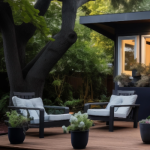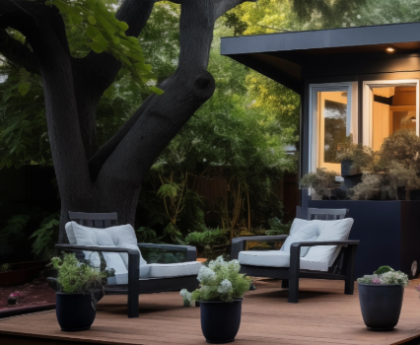A couple concerned about the risk of wildfires has their wish for a fire-proof house granted by a small 3D printer.

RIC Technology’s compact 3D printer can be used in crowded neighborhoods too
A compact robotic 3D printer will help build a fire-resistant house in Walnut, California, early next year. The first-of-its-kind project is expected to set an example for the technique’s utility in areas severely impacted by wildfires.
Additive manufacturing is the industrial name for 3D printing that is being used for a variety of applications around the world. Whether making small machine parts or large bridges, additive manufacturing has proven to be a reliable technique to build quickly. This is why construction firms have also used this approach to make schools and houses with a short turnaround time.
Interesting Engineering has previously covered how 3D printing is used to build a large-scale housing complex. These have typically been new projects in empty spaces without much difficulty determining how the printing equipment can be placed. However, the same approach becomes difficult to deploy when reconstructing an old house or building an accessory dwelling unit (ADU) in crowded neighborhoods.
Need for ADUs
Like most countries, the U.S. also sees a housing shortage, especially in populated residential neighborhoods. Adding ADUs is a cost-effective way to tide over these shortages since it increases the liveable areas in existing buildings rather than having to build new buildings altogether.
One would assume 3D printing would be a valuable help here since it can significantly reduce the time of construction of these additional units and address housing shortages in a time-bound manner. However, conventional 3D printing systems are too bulky to move into existing neighborhoods and begin construction.
One of the major reasons for their size is the gantry-based system used in the construction. Such a system allows the printer head to move in multiple axes. While such an approach works inside an industrial unit, it falls short in populated areas.

Compact printer, fire-proof construction
Philip and Constance, a couple living in one such populated residential zone in Walnut, California, were looking to add an ADU to their house and approached Builtech Construction Group for a solution. The construction firm quickly teamed up with RIC Technology, a Fontana, California-based 3D printing company that boasts a compact modular robotic printer.
The couple also expressed concerns about California’s escalating wildfire crisis. Estimates suggest that in 2020, wildfires burned over 4.2 million acres across the state, leading to US$1 billion in fire protection costs. Builtech and RIC pondered the concerns and devised a unique solution to build a fire-proof home.

During a wildfire, heat, and oxygen are two components of the fire triangle that are outside the control of a house-dweller. What can be controlled is the fuel, and the team focused on eliminating the fuel when constructing this house.
Concrete used in 3D printing constructions is already fire-resistant and non-combustible. The team will now go a step further, and instead of using wood for the roof, they will build it using light steel and sureboards. The construction group said that areas such as eave vents and windows that are vulnerable to fires will also be strengthened.
“This marks a milestone in the housing industry, expanding the scope of concrete 3D printing’s application in constructing affordable housing,” said Ziyou Xu, founder and CEO of RIC Technology, in a press release. In the future, the two teams will collaborate to build more fire-resistant homes in wildfire-prone areas.
RECOMMENDED ARTICLES
The Blueprint Daily
Stay up-to-date on engineering, tech, space, and science news with The Blueprint.
ABOUT THE EDITOR
Ameya Paleja Ameya is a science writer based in Hyderabad, India. A Molecular Biologist at heart, he traded the micropipette to write about science during the pandemic and does not want to go back. He likes to write about genetics, microbes, technology, and public policy.



